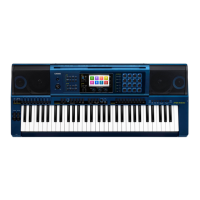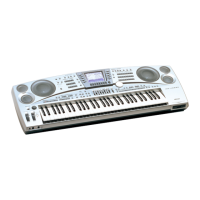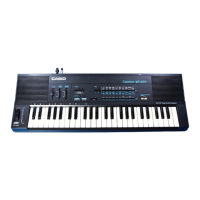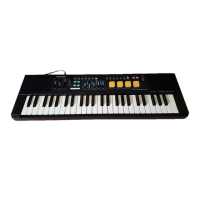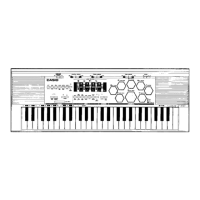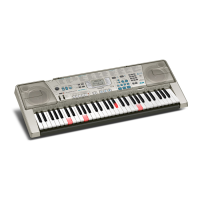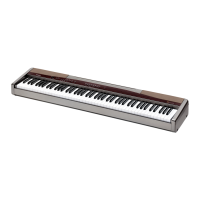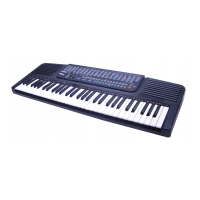EN-30
Using the Pattern Sequencer
1.
On the PATTERN SEQUENCER screen, touch “Part Edit”.
This displays the PART EDIT screen.
2.
Configure parameter settings as required.
• Touch a display item and then select from the list that appears. Use the 9 w/NO, q/YES buttons to change setting
values.
To edit the data of each part
Item Description Setting
Element Select Selects an element for editing. Intro 1, 2
Variation 1 to 4
Fill-in 1 to 4
Ending 1, 2
Part Select Selects a part for editing. Drums, Bass,
Chord 1 to 5,
Percussion
Part Copy Copies a part of another rhythm. Intros and endings cannot be copied.
1. In the “Source” column, specify the copy source rhythm, element, and part.
• To copy an event only, touch “Event Only” so it is “On”.
2. In the “Destination” column, specify the destination element and part of the copy
operation.
3. Touch “Execute”.
4. Touch “Yes”.
This copies the selected part.
• The source element and destination element must be the same type.
• Parts that can be copied depend on the type of the copy destination part.
Parameter Edit The settings of the part parameters below can be configured.
Parameter editing can be performed only when a part is a recordable status (Track
Status: Empty or Recorded). For more information, see “Instrument Part Editing and
User Areas” (page EN-26).
Element Select Selects an element. Intro 1, 2
Variation 1 to 4
Fill-in 1 to 4
Ending 1, 2
Part Select Selects a part. Drums, Bass,
Chord 1 to 5,
Percussion
Table See “Table (Chord Conversion Table)” (page EN-32).
• Drum and percussion parts cannot be edited.
Break Point This parameter specifies a note key, from C to B, as the point at which Auto
Accompaniment bass and chord notes drop one octave.
For example when F is specified as the break point, a C major chord recorded as
C3E3G3 (CEG) becomes D3F
#
3A3 (DF
#
A raised one note each) when D is fingered on
the chord keyboard, E3G
#
3B3 (EG
#
B raised one note each) when E is fingered, and
F2A2C3 (FAC dropped one octave) when F is fingered.
• Drum and percussion parts cannot be edited.
C to B
